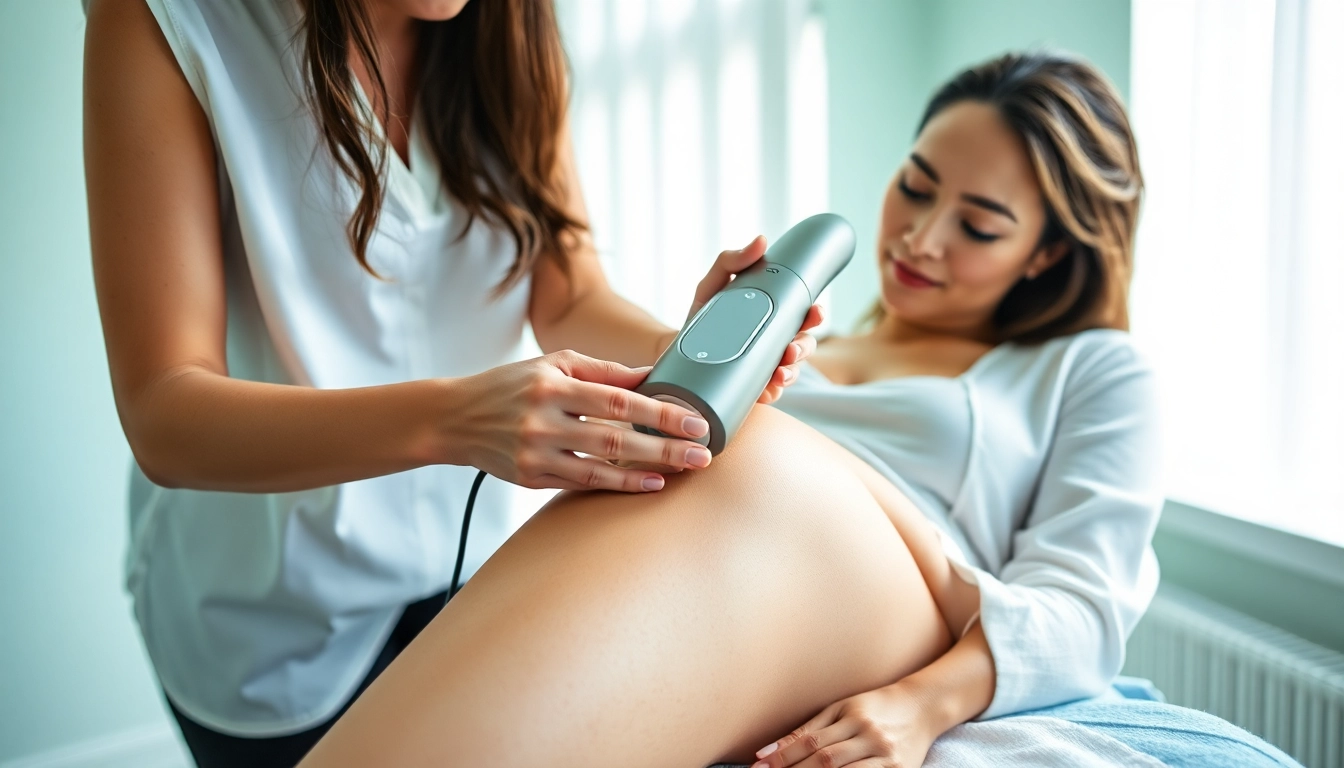Understanding Cellulite: Causes and Myths
Cellulite, the dimpled appearance of the skin, is a common aesthetic concern that affects a significant portion of the population, predominantly women. It occurs when fat deposits push through the connective tissue beneath the skin. Despite being a natural occurrence, societal perceptions often stigmatize it, leading many to seek cellulite therapy options to smooth the skin’s appearance. To effectively address this condition, it’s essential to understand what cellulite is, common misconceptions, and the contributing factors that make it prevalent.
What is Cellulite?
Cellulite refers to the uneven, bumpy texture of skin that typically appears on the thighs, hips, buttocks, and abdomen. It results from the interplay of fat, connective tissues, and the skin’s structure. As fat cells become enlarged, they push through connective tissues, resulting in the characteristic dimpling. The degree of cellulite can vary, with some individuals experiencing mild forms and others facing more severe lumps and bumps.
Common Misconceptions About Cellulite
Many myths surround cellulite, which often leads to misunderstandings about its causes and treatment. One prevalent belief is that cellulite only affects overweight individuals. In reality, people of all body types can develop cellulite due to genetic predisposition, hormonal factors, and lifestyle choices. Another myth is that cellulite can be entirely eliminated; while treatments can significantly reduce its appearance, completely eradicating it is unrealistic.
Factors Contributing to Cellulite Formation
Several underlying factors contribute to the formation of cellulite:
- Genetics: Family history plays a crucial role in determining skin structure and the likelihood of developing cellulite.
- Hormonal Factors: Hormones such as estrogen are implicated in cellulite development, which often manifests more prominently after puberty or during pregnancy.
- Lifestyle Choices: Poor diet, lack of exercise, and smoking can exacerbate cellulite severity by contributing to fat accumulation and poor circulation.
Exploring Popular Cellulite Therapy Options
With the growing demand for methods to reduce or manage the appearance of cellulite, numerous therapy options have emerged. These methods can be broadly categorized into non-invasive, minimally invasive, and home remedies.
Non-Invasive Techniques for Cellulite Therapy
Non-invasive techniques are among the most popular cellulite therapy options. They aim to improve skin texture and reduce the visibility of cellulite without surgical intervention. These methods include:
- Acoustic Wave Therapy: This technique employs sound waves to break down fat deposits and stimulate circulation, promoting a smoother skin surface.
- Radiofrequency Treatments: Utilizing heat energy, radiofrequency therapies target connective tissue and fat layers, rejuvenating the skin and minimizing the appearance of cellulite.
- Topical Treatments: Creams and lotions containing caffeine or retinoids can temporarily enhance skin texture by improving hydration and tightening the skin.
Minimally Invasive Procedures
For those seeking quicker results, minimally invasive procedures are available, often performed in a clinical setting with little downtime. Options include:
- Laser Treatments: Ablative laser therapies can penetrate deeper layers of the skin, effectively breaking down the fibrous bands responsible for dimpled skin.
- Subcision: This technique involves the insertion of a needle under the skin to release the fibrous bands, allowing for smoother skin surface.
- Vacuum-Assisted Precise Tissue Release: In this procedure, a device is used to create suction on the skin, which loosens the connective tissue, providing immediate results.
Home Remedies and Lifestyle Changes
Numerous home remedies and lifestyle changes are often recommended to manage cellulite effectively. While the results may vary, incorporating these strategies can support overall skin health:
- Regular Exercise: Engaging in physical activity can help reduce body fat and improve muscle tone, potentially decreasing the visibility of cellulite.
- Healthy Diet: Consuming a diet rich in fruits, vegetables, and whole grains while minimizing processed foods can improve skin texture.
- Hydration: Drinking plenty of water can aid in maintaining skin elasticity and overall health.
- Caffeine-Based Scrubs: Exfoliating with scrubs containing caffeine may temporarily tighten skin and enhance its appearance.
How to Choose the Right Cellulite Therapy for You
Selecting the most suitable cellulite therapy requires careful consideration of personal factors, treatment efficacy, and long-term maintenance. Here’s how to navigate your options:
Assessing Your Body and Skin Type
Individual body composition, skin type, and the severity of cellulite play crucial roles in determining which treatment will be most effective. For example, those with more pronounced dimpling may benefit more from minimally invasive procedures than non-invasive treatments.
Consulting with Professionals for Personalized Solutions
Before undergoing any treatment, consulting with a healthcare professional or dermatologist is essential. They can provide personalized advice based on your skin type, lifestyle, and desired outcomes. Be open to discussing all treatment options, potential side effects, and recovery expectations.
Understanding Potential Outcomes and Expectations
Realistic expectations are vital when seeking cellulite therapy. Understanding that most treatments offer improvement rather than complete resolution will help manage your expectations. Always ask for before-and-after photos or testimonials from practitioners to gauge efficacy.
Maximizing Results: Best Practices for Cellulite Therapy
Maximizing the benefits of any cellulite therapy requires a holistic approach. Combining treatment with a healthy lifestyle can enhance results and maintain improvements over time.
Post-Treatment Care and Maintenance
Proper aftercare following treatment can significantly impact results. Adhering to the following practices can support healing and ensure the longevity of effects:
- Avoiding Excessive Sun Exposure: Protecting treated areas from sun damage promotes healing and preserves results.
- Moisturizing Regularly: Keeping skin hydrated can aid in recovery and improve overall skin texture.
- Attending Recommended Follow-Up Sessions: Regular check-ups or follow-up treatments can help maintain results and address any concerns.
Incorporating Healthy Lifestyle Choices
Long-term management of cellulite can be achieved through sustainable healthy habits. Here are some effective strategies:
- Balanced Nutrition: Focus on a diet rich in antioxidants, fibers, and healthy fats that contribute to skin health.
- Routine Exercise: Implement a workout regimen that includes cardio, strength training, and flexibility exercises to promote circulation and toning.
- Avoiding Smoking and Excessive Alcohol: Both can negatively impact skin quality and overall health.
Building a Routine for Long-Term Skin Health
Establishing a daily or weekly routine that includes skin care and treatment follow-ups can further aid in maintaining the skin’s appearance. Consistency is key in ensuring ongoing results from any cellulite therapy.
Future Trends in Cellulite Therapy
The field of cellulite therapy is continually evolving, with ongoing research and innovative technologies emerging. Staying informed about these advancements can help individuals make knowledgeable decisions regarding their treatment options.
Innovative Technologies on the Horizon
New technologies are being developed to enhance the efficacy and ease of cellulite treatments. These include:
- Bioremodelling Techniques: This approach aims to restructure the skin by stimulating collagen and elastin production, resulting in smoother skin.
- Smart Devices: As technology advances, handheld devices for at-home treatments become more sophisticated, offering greater ease of use and efficiency.
Research and Development in Cellulite Treatments
Ongoing clinical trials and research studies are vital in exploring new formulations and delivery methods for existing treatments. Staying updated on recent findings can help consumers gain insights into which therapies may work best.
Holistic Approaches and Integrative Techniques
The trend towards holistic skin care emphasizes the connection between overall wellness and skin health. Integrating practices such as stress reduction, mindfulness, and balanced nutrition may support cellulite management far better than isolated treatments alone.






















+ There are no comments
Add yours